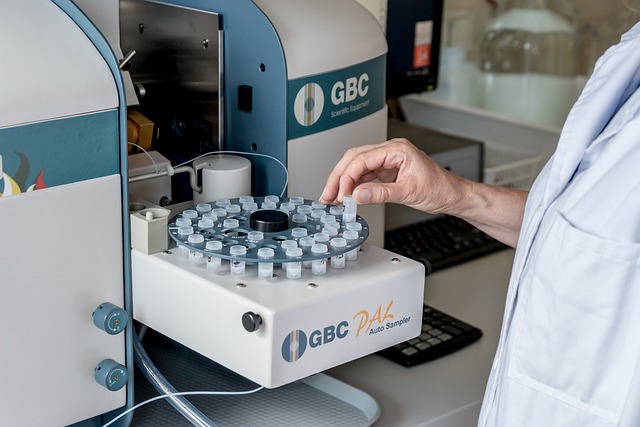Post-traumatic stress disorder (PTSD) is a debilitating mental health condition caused by traumatic events, leading to intrusive memories, avoidance behaviors, and emotional distress. Traditional treatments include Cognitive Behavioral Therapy (CBT), Eye Movement Desensitization and Reprocessing (EMDR), and Exposure Therapy. Exposure therapy involves safe, gradual exposure to traumatic memories, helping individuals confront fears, modify negative thoughts, and develop healthy coping mechanisms. This powerful PTSD treatment reduces symptoms of anxiety, fear, and avoidance, improving overall mental health and quality of life. Combining therapies like CBT or EMDR with exposure therapy offers a comprehensive, holistic approach to treating PTSD, addressing both symptoms and underlying causes for effective long-term recovery.
“Uncovering a Path to Healing: Exploring Exposure Therapy for Trauma Survivors
Post-traumatic stress disorder (PTSD) affects millions, leaving individuals struggling with haunting memories and intense emotional responses. Traditional therapies offer hope, yet many seek alternative approaches. Exposure therapy emerges as a powerful PTSD treatment, helping individuals confront and overcome traumatic memories.
This comprehensive guide delves into the mechanics, steps, and benefits of exposure therapy, addressing common concerns and its integration with other treatments. Prepare to discover a transformative journey towards healing.”
Understanding PTSD and its Impact

Post-traumatic stress disorder (PTSD) is a mental health condition that can occur after someone experiences or witnesses a traumatic event, such as military combat, violence, or a natural disaster. It’s characterized by intrusive memories, avoidance of trauma-related triggers, negative changes in thinking and mood, and heightened arousal or reactivity. These symptoms can significantly impact an individual’s daily life, making it challenging to function normally and leading to various social, occupational, and emotional difficulties.
Understanding PTSD is crucial for implementing effective treatment strategies, such as exposure therapy, which has emerged as a prominent approach in PTSD treatment. This form of therapy helps individuals confront and process traumatic memories in a safe and controlled environment, allowing them to gradually reduce their avoidance behaviors and associated distress. By facing their fears and learning healthy coping mechanisms, those with PTSD can regain control over their lives and improve their overall well-being.
Traditional Therapies for Trauma Healing

Traditional therapies for trauma healing often involve a combination of techniques aimed at helping individuals process and overcome their experiences. Cognitive behavioral therapy (CBT) is a widely recognized approach that focuses on identifying and changing negative thought patterns and behaviors associated with traumatic memories. This form of PTSD treatment helps individuals challenge and reframe distressing thoughts, leading to improved emotional regulation.
Additionally, eye movement desensitization and reprocessing (EMDR) has gained prominence as an effective method for treating post-traumatic stress disorder (PTSD). EMDR therapy facilitates the processing of traumatic memories by engaging the client in a series of bilateral stimulation exercises while recalling the event. This process helps desensitize individuals to the trauma, reducing its impact on their emotional well-being and promoting healing.
Introduction to Exposure Therapy

Exposure therapy is a highly effective psychological treatment approach for Post-Traumatic Stress Disorder (PTSD). It’s a form of cognitive-behavioral therapy that helps individuals confront and process traumatic memories or experiences in a safe and controlled environment. By gradually exposing themselves to these reminders, patients can learn to manage their reactions and reduce the distress associated with traumatic events.
This therapy works on the principle that by repeatedly experiencing traumatic memories without suffering harm, individuals can desensitize themselves to the fear and anxiety triggered by those memories. This process allows them to develop healthier coping mechanisms and regain control over their lives, ultimately improving their mental health and quality of life.
Mechanisms of Exposure Therapy

Exposure therapy is a highly effective PTSD treatment that focuses on helping individuals confront and process traumatic memories or situations in a safe and controlled manner. The core mechanism behind this therapy involves desensitizing patients to the fear-provoking stimuli associated with their trauma, thereby reducing the emotional response and associated symptoms. Through gradual and repeated exposure, patients learn to manage their anxiety and gain a sense of control over their traumatic memories.
This process typically involves three key components: cognitive restructuring, relaxation techniques, and exposure exercises. Cognitive restructuring aids individuals in challenging and changing their negative thoughts related to the trauma, replacing them with more adaptive beliefs. Relaxation techniques, such as deep breathing or muscle relaxation, help patients manage their anxiety response during exposure. Exposure exercises then gradually expose the individual to traumatic memories or situations, starting from less distressing scenarios and progressively moving towards more fearful ones, allowing for a safe process of healing and recovery.
Steps Involved in Conducting Exposure Therapy Sessions

Exposure therapy for trauma involves a structured process aimed at helping individuals confront and overcome fears associated with traumatic events, ultimately aiding in PTSD treatment. The sessions typically begin with a comprehensive assessment to understand the client’s history, triggers, and severity of symptoms. This foundation allows therapists to tailor the exposure therapy approach to individual needs.
During subsequent sessions, the therapist guides the client through carefully structured scenarios or memories related to the trauma. Initially, these may be hypothetical or mild reminders of the traumatic event. Gradually, over multiple sessions, the intensity increases until the client faces the full recall of the trauma in a safe and controlled environment. Through this gradual exposure, individuals learn coping strategies, challenge negative beliefs, and desensitize themselves to the fear-inducing memories, ultimately reducing symptoms of PTSD.
Benefits and Effectiveness of Exposure Therapy

Exposure therapy is a highly effective PTSD treatment that focuses on helping individuals confront and overcome their traumatic memories and triggers. By gradually and safely exposing them to the distressing situations, thoughts, or activities associated with their trauma, this therapy enables people to process and manage their responses. The benefits are significant; it can reduce anxiety, fear, and avoidance behaviours, and improve overall mental health.
This approach is based on the principle that prolonged exposure to traumatic memories in a controlled setting helps individuals desensitise and ultimately gain control over their reactions. As a result, they become better equipped to cope with reminders of the trauma in everyday life, leading to lasting changes in emotional responses and thought patterns. Numerous studies have demonstrated its effectiveness, making it a recommended course of action for those seeking PTSD treatment.
Common Concerns and Considerations

Exposure therapy is a powerful tool in the arsenal of PTSD treatment, but it’s not without its common concerns and considerations. One of the primary worries is the potential for triggering intense emotional responses during therapy sessions. Patients may experience reliving traumatic memories, which can be distressing and, in some cases, lead to avoidance or discontinuation of treatment. Therefore, therapists must carefully tailor the exposure exercises to the individual’s tolerance level, ensuring a gradual and controlled approach.
Another significant aspect is the importance of a safe therapeutic environment. Patients need to feel secure and supported throughout the process. Therapists should be well-trained in managing intense emotions and have strategies in place for providing comfort and reassurance. Additionally, regular check-ins and monitoring of patients’ progress are essential to address any emerging difficulties and ensure the effectiveness of exposure therapy as a PTSD treatment method.
Integrating Other Therapies with Exposure Therapy

Many individuals suffering from trauma-related disorders, such as post-traumatic stress disorder (PTSD), find that a combination of therapies proves more effective than any single treatment. Exposure therapy, a well-established method for treating PTSD, can be integrated with other therapeutic approaches to enhance its benefits. For instance, cognitive-behavioural therapy (CBT) often complements exposure therapy by helping individuals challenge negative thoughts and beliefs associated with their traumatic experiences.
This multi-modal approach allows for a more comprehensive treatment plan. By combining exposure therapy with CBT or other evidence-based methods like eye movement desensitization and reprocessing (EMDR), therapists can address various aspects of the patient’s well-being simultaneously. Such integrated therapies offer a holistic path to healing, focusing on both the symptoms and underlying causes of trauma.
Real-Life Success Stories and Takeaways

Many individuals suffering from Post-Traumatic Stress Disorder (PTSD) have found hope and healing through exposure therapy, as evidenced by numerous real-life success stories. These accounts highlight the power of this PTSD treatment approach in helping people confront and overcome their traumatic memories. By gradually and safely exposing themselves to the triggers associated with the trauma, individuals can learn to manage their symptoms and regain control over their lives.
Takeaways from these success stories include the importance of finding a supportive therapist who specializes in exposure therapy for PTSD. When combined with other evidence-based treatments, such as cognitive behavioral therapy, exposure therapy can lead to significant improvements in mental health and overall quality of life. These personal narratives also emphasize that healing is a journey, and while it may be challenging, the potential for transformation and resilience is profound.
